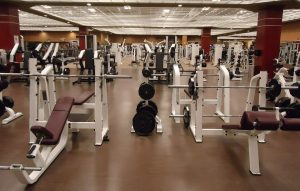https://motorimpairment.neura.edu.au/resistance-training-after-stroke/
Muscle weakness is the largest cause of disability after stroke (Canning et al 2004). Stroke survivors have levels of muscle strength that are about half of that of people who have not had a stroke (Dorsch et al 2016; Horstman et al 2008). Thus, it is important to identify interventions that can improve muscle strength in stroke survivors.
The most proven method for improving muscle strength is progressive resistance training. Progressive resistance training involves lifting a load 8 to 15 times to the point of muscle fatigue and then progressively increasing the intensity of the exercise over the course of an intervention. Progressive resistance training has been shown to be effective at increasing muscle strength in people without stroke, but it is unclear how effective it is at improving muscle strength and physical function in stroke patients.
In our recent paper (Dorsch et al. 2018), we reviewed data from 11 clinical trials that used progressive resistance training to try to improve strength and function in people with stroke. Our review included trials in which study participants were stroke survivors at any time after stroke, and the trials also needed to include an intervention group that performed progressive resistance training and a control or placebo group that did not perform the training. We looked at the changes in muscle strength and function in these studies. In general, studies that involved training of leg muscles, function was measured with walking speed, and studies that involved training of arm muscles involved functional tests of the arms.

WHAT DID WE FIND?
We found that progressive resistance training is effective at increasing muscle strength in people with stroke. The average increase in strength is 50% in muscles that are specifically targeted by training. However, this large increase in strength does not consistently reduce disability. That is, the improvement in strength does not always carryover directly to better walking or better use of the affected arm in functional tasks.SIGNIFICANCE AND IMPLICATIONS
In stroke survivors, progressive resistance training increases muscle strength. However, this does not necessarily improve arm function or the ability to walk. This finding suggests that if stroke survivors are strong enough to participate in resistance training then muscle weakness is not their main impairment, and training should target other impairments, such as loss of coordination. However, if a patient has very weak muscles – too weak to move against small resistances or against gravity – then increasing strength should still be a priority.PUBLICATION REFERENCE
Dorsch S, Ada L, Alloggia D. Progressive resistance training increases strength after stroke but this may not carry over to activity: a systematic review. J Physiother 64:84-90, 2018.KEY REFERENCES
Canning CG, Ada L, Adams R, O’Dwyer NJ. Loss of strength contributes more to physical disability after stroke than loss of dexterity. Clin Rehabil 18:300-308, 2004.Dorsch S, Ada L, Canning CG. Lower limb strength is significantly impaired in all muscle groups in ambulatory people with chronic stroke: a cross-sectional study. Arch Phys Med Rehabil 97:522-527, 2016.
Horstman AM, Beltman MJ, Gerrits KH, Koppe P, Janssen TW, Elich P, deHaan A. Intrinsic muscle strength and voluntary activation of both lower limbs and functional performance after stroke. Clin Physiol Funct Imaging 28:251-261, 2008.
No comments:
Post a Comment